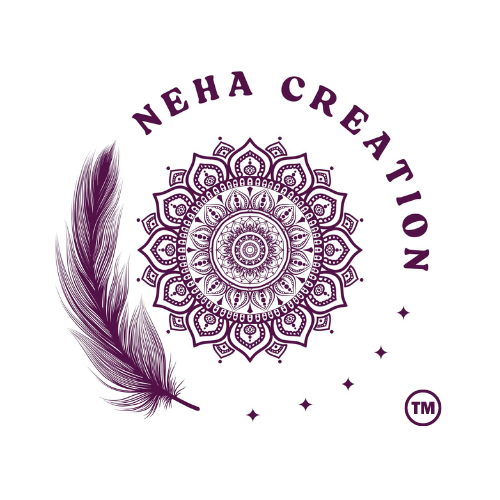Introduction
In today’s fast-paced corporate world, organizations are constantly seeking innovative ways to enhance leadership skills and foster strong team dynamics. One such unique and transformative approach is Mandala Art. Rooted in ancient traditions, Mandala Art serves as a powerful tool for self-discovery, focus, and collaboration. By integrating Mandala Art into corporate leadership programs and team-building activities, businesses can cultivate a more harmonious, creative, and resilient work environment.
Understanding Mandala Art
Mandala, a Sanskrit word meaning “circle,” is a geometric design that symbolizes the universe, balance, and interconnectedness. Traditionally used in meditation and spiritual practices, Mandala Art is known for its ability to promote mindfulness, reduce stress, and enhance cognitive abilities.
In the corporate setting, Mandala Art. can serve as a metaphor for organizational unity, goal alignment, and personal growth, making it an invaluable tool for leaders and teams alike.
How Mandala Art Enhances Corporate Leadership
1. Encourages Mindful Leadership
Effective leaders must be self-aware, composed, and strategic in their decision-making. Practicing Mandala Art requires deep concentration, patience, and mindfulness, which are essential traits of a great leader. By engaging in this creative practice, corporate leaders can improve their ability to focus, remain calm under pressure, and make more thoughtful decisions.
2. Boosts Creativity and Innovation
Mandala Art. allows leaders to tap into their creative potential, fostering out-of-the-box thinking. Leadership roles often require innovative problem-solving skills, and the repetitive yet dynamic patterns of Mandalas encourage a shift in perspective, leading to fresh ideas and innovative business strategies.
3. Promotes Emotional Intelligence
Great leaders possess high emotional intelligence (EQ), which includes self-awareness, empathy, and interpersonal skills. Creating Mandalas helps individuals reflect on their emotions and inner thoughts, enhancing their ability to understand and connect with their teams on a deeper level.
4. Develops Patience and Resilience
Mandala Art. is a meticulous process that requires patience and perseverance. Leaders who engage in this practice learn to embrace challenges, stay committed to long-term goals, and navigate business uncertainties with a steady mindset.
The Impact of Mandala Art on Team Building
1. Strengthens Team Bonding
Creating Mandalas as a group activity fosters collaboration and mutual understanding among team members. The process requires individuals to work together, synchronize their efforts, and appreciate each other’s contributions, ultimately strengthening the team’s cohesion.
2. Encourages Effective Communication
Mandala Art. workshops create a non-judgmental space for employees to express themselves creatively. This practice enhances communication skills, as team members discuss designs, exchange ideas, and learn to appreciate different perspectives within the group.
3. Reduces Workplace Stress and Anxiety
The intricate patterns and soothing nature of Mandala Art serve as a powerful stress-relief mechanism. Team-building activities centered around Mandala creation can help employees relax, rejuvenate, and return to work with a refreshed mindset, ultimately improving productivity.
4. Instills a Sense of Unity and Purpose
Just like a Mandala’s structure, every team consists of different elements that contribute to a larger, unified goal. Engaging in this artistic practice reinforces the idea that each member plays a vital role in achieving organizational success.
Implementing Mandala Art in Corporate Programs
1. Mandala Art Workshops for Leadership Development
Companies can organize Mandala Art leadership workshops to help executives and managers refine their leadership skills. These workshops can include guided Mandala drawing sessions, mindfulness exercises, and discussions on how art influences leadership qualities.
2. Team-Building Activities with Mandala Creation
HR departments can integrate team Mandala projects where employees collaborate to create a large-scale Mandala. This can be done during corporate retreats, team-building sessions, or even as a virtual activity for remote teams.
3. Mindfulness Sessions with Mandala Art
Organizations can introduce Mandala Art therapy sessions as part of their employee wellness programs. These sessions can be used as a way to de-stress, encourage mindfulness, and promote a balanced work environment.
4. Using Mandala Art for Goal Setting and Vision Planning
Businesses can incorporate Mandala Art into strategic planning sessions where employees and leaders visually represent their goals, values, and company vision through Mandala-inspired illustrations.
Conclusion
Mandala Art. is more than just a creative expression—it is a transformative tool that enhances corporate leadership and strengthens team dynamics. By integrating Mandala Art into the workplace, businesses can foster mindful leadership, inspire creativity, and build cohesive teams that work harmoniously toward shared goals. In an era where corporate success relies on innovation, emotional intelligence, and resilience, Mandala Art emerges as a powerful ally in shaping a thriving work culture.



